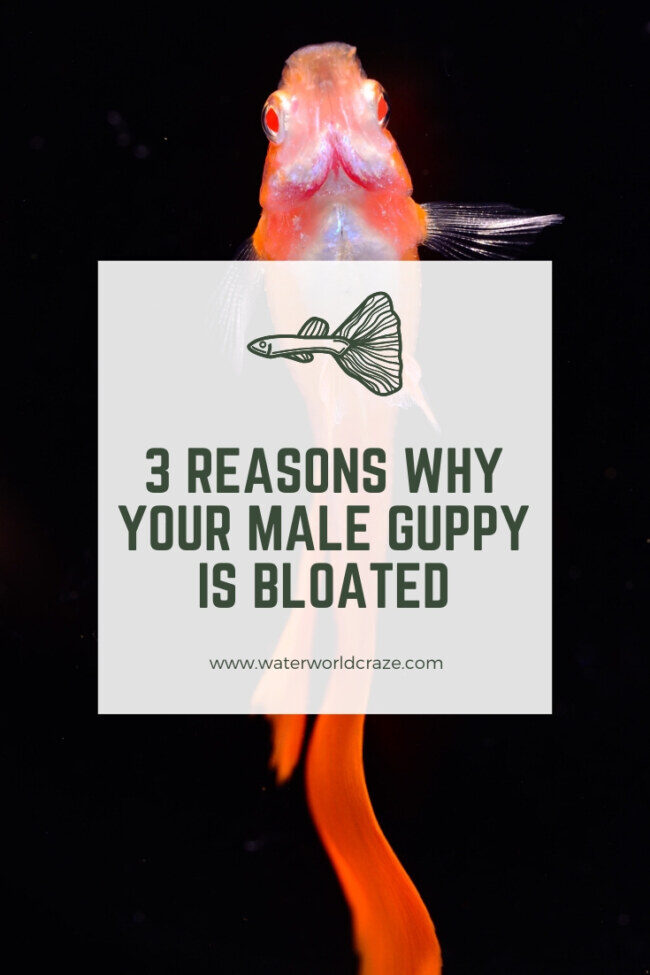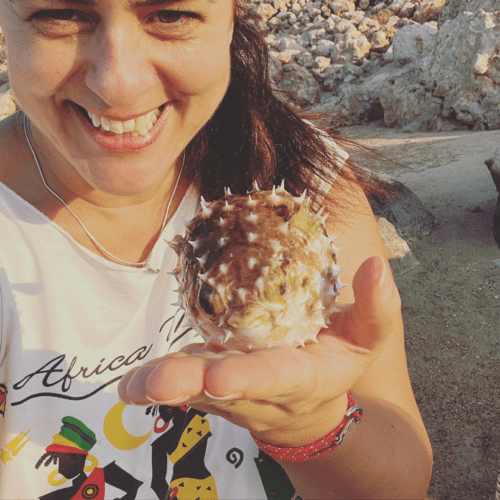 Guppies are easy and inexpensive to maintain and beautiful to look at with their vibrant colors and flashy tails. But like all other fish, they too are not immune to health problems.
Guppies are easy and inexpensive to maintain and beautiful to look at with their vibrant colors and flashy tails. But like all other fish, they too are not immune to health problems.
Why is my male guppy bloated? The most common reason for bloating in male guppies is the dropsy disease. It is a condition caused by the accumulation of fluids in the gut and other internal organs. Other reasons for bloating in male guppies could be indigestion or constipation.
If you see your pet guppy bloated and uncomfortable, it is natural to be concerned. However, it might not always be as bad as you might think. While dropsy disease is not easy to treat, some cases of bloating can be treated with proper care.
A daily inspection routine can quickly bring to your notice any abnormal signs. A bloated guppy is usually easy to spot. Since there is no single reason for a bloated guppy, there is no straight answer to whether the condition is harmful to them.
However, knowing all probable reasons for bloating can help you understand what is wrong with your guppy. And you also have a good chance of saving the guppy and possibly prevent the occurrence of this condition.
Here’s all you need to know about the dropsy disease and other reasons for bloating.
Table of Contents
Dropsy disease
As stated above, dropsy can be a cause for bloating in male guppies. Here’s what you need to know about the disease.
What is Dropsy disease?
Dropsy is a disease characterized by fluid build-up in the internal organs, body cavity, or tissues of the fish. The exact cause of dropsy can be difficult to determine. However, one of the reasons for dropsy is Mycobacteriosis.
It is a bacterial infection that can occur in fish that have a poor immune system. Another reason could be an infection in the fish’s kidneys, a parasitic infection, or liver dysfunction. Poor quality of water can also cause dropsy.
Dropsy disease is also commonly referred to as the ‘swollen belly disease’.
If the fish has dropsy, the stomach of the fish swells visibly. It looks oval in shape. Also, the spine looks abnormal. The scales start protruding away from the fish’s body and the gills appear to be pale.
These symptoms are a sure sign that the fish has dropsy and needs immediate attention. The video below shows an example of a male with a swollen belly.
Is Dropsy Contagious?
As already stated, dropsy can be caused by a variety of reasons. Thus, depending on the root cause for the condition, it might or might not be contagious. However, it is always recommended to quarantine the sick fish.
Also, while dropsy cannot be passed on to humans from fish, wearing rubber gloves while handling the fish and washing your hands later is recommended.
Treatment of Dropsy
Usually, dropsy caused by polluted water and a resulting bacterial infection becomes difficult to treat. It impacts the kidneys and other vital organs. This damage can be irreversible and sadly, there is nothing much you can do in such cases.
When the dropsy is caused by a bacterial infection, the infection is so rapid that there is no hope for a cure. It is advised that when it is clear that the fish cannot be treated, it should be freed from its suffering by euthanizing it.
There are several ways of administering painless euthanasia and disposing of the fish safely. This will help contain the infection and stop it from spreading to the fish in the tank.
However, euthanasia is a last resort, and you can try treating a guppy with a swollen belly by following the below steps. Some fish owners have reported a complete cure by using this method. So, it is worth trying.
- Quarantine the fish by keeping it in a tank with just a filter. Antibiotics (prescribed by a vet) can be added to the water in this tank.
- Put it in an Epson salt bath for some time every day.
- Discard any old fish food and feed the fish with fresh, good quality food.
Also, if you have one guppy suffering from dropsy, monitor other guppies for similar symptoms. You can also run a short Epson salt bath for all guppies, just to be on the safer side.
Prevention of Dropsy
Proper care of your pet guppies is important not just for prevention of dropsy, but also for their overall well-being. Since dropsy usually affects fish with lower immunity, giving the guppies a stress-free environment is also important. Below are ways in which you can help keep your fish healthy and well.
- Water in the fish tank should be changed regularly. Usually, changing 1/3rd of the volume of the tank on a weekly basis is ideal.
- Mind the number of guppies as against the tank capacity. Overcrowding can stress the fish out and result in some guppies aggressively bullying the others. This article will give you a good idea of how many guppies you should keep!
- Adopt proper feeding schedules. Do not overfeed and do not use old fish food. Feed a good variety of food.
- Keep the water temperature regulated by using a heater.
- Maintain the tank by cleaning it and using a clean filter.
- If you notice some aggressive guppies, isolate them so that don’t stress out the other fish. (We also highly recommend reading our article on aggression in guppies – Read it here!)
If you maintain optimum living conditions for the guppies, dropsy is not something they can be susceptible to. Firstly, clean water will ensure there are no harmful bacteria. Secondly, fish with a healthy immune system means that they will not be vulnerable to a bacterial infection.
If you are maintaining a regular cycle of water change and your pet guppies are still getting dropsy, it could be due to the bacteria getting introduced by new fish or from live food.
Hence, before introducing new fish to the tank, keep them in quarantine for a few days to see whether they are healthy. Be careful of live food since it might be infected.
2 Other Reasons For Bloated Male Guppies
While a swollen belly can mean dropsy, it could also be due to other, less harmful reasons.
1. Overeating and Constipation
Overfeeding can cause bloating in male guppies. If you give too much food, the guppies might get indigestion which can lead to constipation. Remember that constipation in guppies can be potentially life-threatening, if not treated in time.
Lack of fibrous food in the diet or a diet comprising of foods that can extend in their bellies can cause bloating and constipation. The best defense against constipation is to avoid improper feeding.
However, if you see a bloated guppy due to suspected constipation, it needs to be treated quickly.
Avoid feeding the constipated guppies for a couple of days to ease constipation. You can also feed them small portions of cooked peas. Cooked peas are natural laxatives for fish and can help relieve constipation.
Also, as a precautionary measure, soak pellet food in water before feeding it to the guppies.
Constipation will usually clear in a couple of days. If it does not go away, it can indicate a serious problem such as dropsy due to an underlying infection.
2. Pregnancy
Of course, this is only the case in female guppies. A female guppy appears bloated just before it is about to give birth to fry. However, a pregnant belly is usually round as opposed to oval in case of dropsy or other bloating problems.
A female guppy’s belly will come back to its normal size after it delivers the fry.
In this regard, we recommend reading our following articles:
Conclusion
While a bloated abdomen is not very common, being aware of the reasons behind the condition can help you prevent it in your pet guppies. Just by maintaining good hygiene in the tank and making sure the water quality is good, you can ensure your guppies stay healthy.
Avoid overfeeding and regularly monitor your fish. Remember that it is always best to consult a vet when in doubt.

Marta, the driving force behind WaterWorldCraze.com, holds a Master’s degree in Marine Biology and has extensive experience in water sports and activities. With over 7+ years of hands-on experience in marine research and conservation, she has participated in numerous underwater expeditions and projects. Her passion for the aquatic world shines through in her expertly curated content. Join Marta as she explores the wonders of marine life and shares her adventures. Connect with her on Instagram @marinebiologymarta for more insights and updates.

